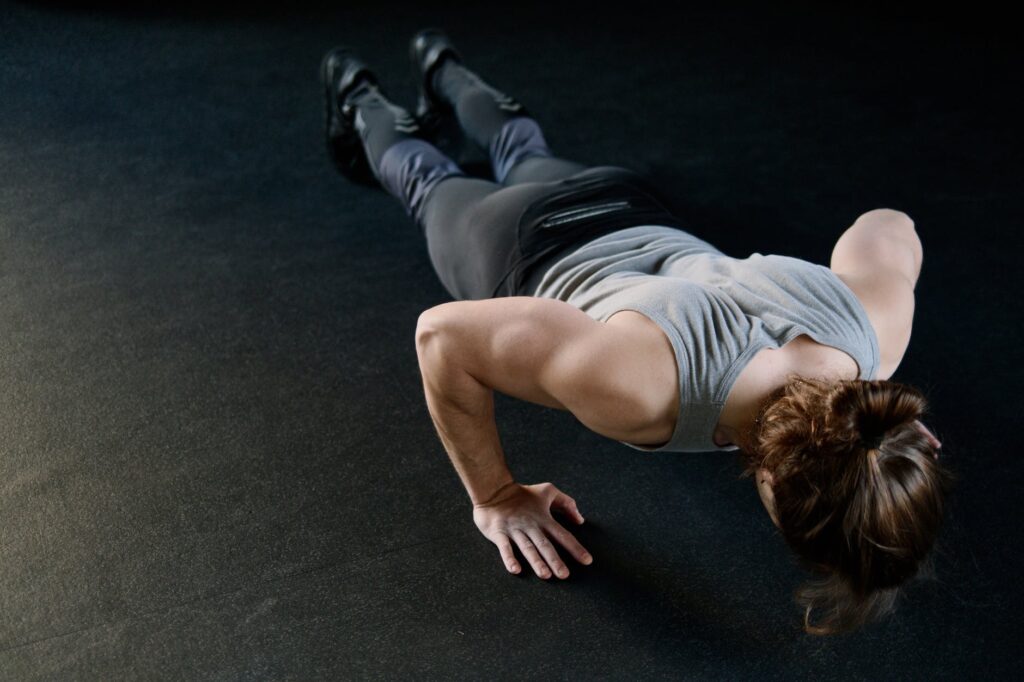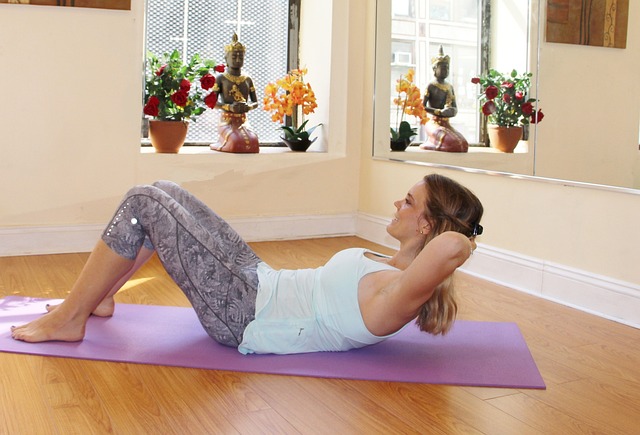Circuit training entails performing a sequence of timed workouts one after the other with varied degrees of rest in between.
We listed some routines that can help you enhance your overall fitness and prevent sports injuries.
Circuit training is one favorite workout among women, per some studies.
I know a lot of folks who do circuit training for injury rehabilitation programs, elite athlete sports conditioning, boosting cardiovascular fitness, enhancing strength, and assisting in losing weight.
Is circuit training used by anyone else?
Col Stewart, a fantastic sports coach, is one of those unique coaches who can take almost any discipline and design a training program that consistently results in exceptional improvements for his athletes.
Many of his world-champion athletes attribute their success to his circuit training routines. His son, Miles Stewart (World Champion Triathlete), Mick Doohan (World 500cc Motorcycle Champion), and countless more from sports as diverse as roller skating, squash, and cycling are among those who have participated. Many other instructors are impressed with circuit training and employ it on a daily basis.
What exactly is Circuit Training?
A simple routine can include push-ups, sit-ups, squats, chin-ups, and lunges. The workout might be constructed as follows, and it could be repeated as many times as needed.

The first movement is push-ups. Do as many of this movement as you can in 30 seconds and rest for 30 seconds.
The second movement is squats. Do as many of this movement as you can in 30 seconds and rest for 30 seconds.
The third movement is sit-ups. Do as many of this movement as you can in 30 seconds and rest for 30 seconds.
The fourth movement is the lunges. Do as many of this movement as you can in 30 seconds and rest for 30 seconds.
The fifth movement is chip-ups. Do as many of this movement as you can in 30 seconds and rest for 30 seconds.
What makes Circuit Training so effective?
Circuit training’s fast paced and constantly changing nature places a different form of stress on the body than other types of exercise, such as weight training and cardiovascular conditioning.
This training demands tend to prepare the body in a very even, all-around manner. It is one of the most effective methods that work for conditioning your complete body (and mind).
There are numerous other reasons why this is an excellent kind of exercise, and most of them revolve around flexibility. In other words, circuit training is completely adaptable to your unique needs. Because they spend so much time on enormous ships, this type of training is a preferred kind of exercise for the British Royal Marine Commandos. Because of the limited spaces, this style of workout is sometimes the only type of exercise available to them.
Circuit training can be completely customized. Whether you’re a newbie or an elite athlete, you may tailor your circuit training routine to achieve the best results.
A circuit training session can be tailored to your specific needs. Whether you want an all-over body workout, a specialized body area workout, or you need to work on a certain facet of your sport, this can all be handled.
You can also modify your circuit training to focus on strength, endurance, agility, speed, skill development, weight loss, or any other component of your fitness that is essential to you.
Circuit training saves you time.
There is no downtime between sets: Maximum output in the shortest amount of time.
Circuit training may be done in almost any place. For some, their favorite places to conduct this training are parks and playgrounds near where they reside.
You don’t need any fancy equipment. You don’t even need to join a gym. A superb workout session can be just as readily put together at home or in a park.
Utilizing your imagination, you may create a variety of exercises utilizing items such as chairs and tables, as well as children’s outdoor play equipment such as swings and monkey bars.
Another reason people enjoy circuit training is that it is a lot of fun to do in pairs or groups. Half of the group exercises, while the other half rests and motivates the group’s exercising members.

The Different Types of Circuit Training
Circuit training is completely customizable, which means there are an infinite amount of ways to build your circuit training sessions.
Timed Circuit: Working to a fixed time period for both rest and workout periods is involved in this sort of circuit. The work/rest time ratio can be tailored to the needs of the group or individual performing the circuit.
For example, you would perform 30 seconds of exercise and 30 seconds of rest. A timed circuit for athletes may consist of 80 seconds of workout and 20 seconds of rest.
Competition Circuit: Like a timed circuit, you challenge how many repetitions you can perform in the allotted time. You might be able to accomplish 12 push-ups in 30 seconds, for example. The goal is to maintain the time period constant while attempting to increase the number of repetitions you can complete in the allotted time.
Repetition Circuit: This sort of circuit is ideal for big groups of people with varying degrees of fitness and skill. The concept is that the fittest group may perform 20 repetitions of each exercise, the intermediate group may perform 15 repetitions, and the novices may perform 10 repetitions of each exercise.
Running Circuit: This circuit training is best performed outside or in a broad, open space. Choose workouts that are relevant to your sport or focus on a certain area of your sport that you want to improve. Then, instead of merely resting between workouts, run for 200 or 400 meters at a leisurely pace. Sprints or rapid 400-meter runs can also be included in your fitness regimen.
Precautions for Circuit Training and Safety Guidelines
Circuit training is a terrific kind of exercise, but the most common issue is that people become overly enthusiastic due to the timed structure of the exercises. They end up pushing themselves harder than they would otherwise. This causes aching muscles and joints, as well as an increased risk of injury. The following are some precautions you should take.
Be cautious if you’ve never done any kind of circuit training before, even if you consider yourself fairly fit. Circuit training differs significantly from other forms of exercise. It puts a different strain on your body and mind. Therefore, if you’re not used to this type of training, it will take a few sessions for your body to adjust to this new way of training. Please be patient.
Warm-up and cool-down are critical.
DO NOT begin a circuit training program without first performing a full warm-up that includes stretching. As previously stated, circuit training differs greatly from other forms of exercise. Before you begin your circuit training session, your body must be prepped.
Stretching and flexibility exercises should be a frequent element of your circuit workout. Because of the increased intensity of circuits, your muscles, and joints must be flexible and supple.
Circuit Training Workout Examples
It’s simple to create your own programs and routines, and the greatest workout is usually the one you create. The knowledge in this article, combined with the examples below and a little imagination, can assist you in creating the ideal circuit training routine.
Warm up before performing any of the routines below, and take special care to follow the precautions listed above.
#1 – Circuit Repetition: A Total Body Circuit Training Workout
This circuit can be completed independently or in a group setting and should take about 10 minutes to complete.
Beginners should rest 30 to 45 seconds between exercises and 3 to 5 minutes between circuits. Intermediate exercisers should rest for 20 seconds after each exercise and 2–3 minutes after each circuit. Advanced exercisers should not take a break until the finish of each circuit.
- 10 to 15 reps of squat jump
- 10 to 15 reps of standard push-ups
- 15 to 20 repetitions of calf raises
- 10 to 15 reps of bench dips
- 15 to 20 reps of ab crunches
- 60 seconds of jumping rope
- 10 to 15 reps of squat jumps
- 10 to 15 reps of standard push-ups
- 15 to 20 repetitions of calf raises
- 10 to 15 reps of bench dips
- 15 to 20 reps of ab crunches
- 60 seconds of jumping rope

#2 – Running Circuit: A Running Circuit Training Workout Outside
This circuit is done outside on level ground or on a jogging track, and it can be done alone or in a group. Mark out a 200-meter distance, then walk or run the distance between each exercise until the rotation is complete. Feel free to use a timer or a specified number of repetitions for each exercise. Complete 20 repetitions or 30 seconds of each exercise, for example.
Beginners can walk the 200 meters between exercises to collect their breath and prepare for the next, but advanced exercisers should run the 200 meters.
- Walking Lunges
- Twist Crunches
- Jumping Jacks
- Push-ups
- Squats
- Bench Dips
- Squat Jumps
- Crunches
- Push-ups
- Walking Lunges
To Conclude
According to certain research, circuit training is the most time-efficient technique to improve cardiovascular fitness and muscle endurance.
They reveal that circuit training helps women accomplish and maintain their goals longer than other types of exercise or nutrition.
